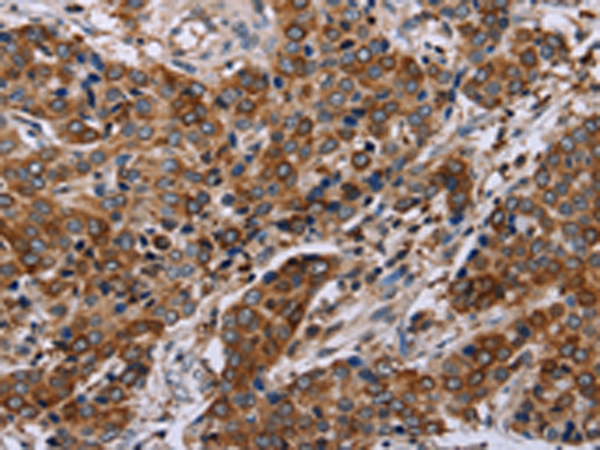


| WB | 咨询技术 | Human,Mouse,Rat |
| IF | 咨询技术 | Human,Mouse,Rat |
| IHC | 1/50-1/200 | Human,Mouse,Rat |
| ICC | 技术咨询 | Human,Mouse,Rat |
| FCM | 咨询技术 | Human,Mouse,Rat |
| Elisa | 1/2000-1/5000 | Human,Mouse,Rat |
| Aliases | hFAF1; CGI-03; HFAF1s; UBXD12; UBXN3A |
| WB Predicted band size | 74 kDa |
| Host/Isotype | Rabbit IgG |
| Antibody Type | Primary antibody |
| Storage | Store at 4°C short term. Aliquot and store at -20°C long term. Avoid freeze/thaw cycles. |
| Species Reactivity | Human, Mouse, Rat |
| Immunogen | Synthetic peptide of human FAF1 |
| Formulation | Purified antibody in PBS with 0.05% sodium azide and 50% glycerol. |
+ +
以下是关于FAF1抗体的3篇参考文献示例(注:文献标题和作者为示例性内容,具体引用时请核实真实来源):
---
1. **文献名称**:*FAF1 modulates NF-κB signalling by interacting with XIAP*
**作者**:Kim, D. et al. (2016)
**摘要**:本研究通过免疫共沉淀(Co-IP)实验,利用FAF1特异性抗体揭示了FAF1与XIAP(X-linked inhibitor of apoptosis)的相互作用,证明FAF1通过调控XIAP稳定性影响NF-κB信号通路,从而参与细胞凋亡和炎症反应。
---
2. **文献名称**:*Development of a monoclonal antibody against FAF1 for cancer biomarker studies*
**作者**:Zhang, Y. et al. (2019)
**摘要**:文章报道了一种高特异性FAF1单克隆抗体的开发与验证,通过Western blot和免疫组化(IHC)证实其在结直肠癌组织中的敏感性,表明FAF1低表达可能与肿瘤进展相关,为癌症诊断提供潜在工具。
---
3. **文献名称**:*FAF1 deficiency exacerbates neurodegeneration in a Parkinson’s disease model*
**作者**:Lee, S. et al. (2021)
**摘要**:利用FAF1抗体进行蛋白表达分析,发现FAF1在帕金森病模型中通过调节线粒体功能减轻神经元损伤,其缺失会加速多巴胺能神经元的退化,提示FAF1可能作为神经保护靶点。
---
**备注**:若需具体文献,建议通过PubMed或Google Scholar以“FAF1 antibody”、“FAF1 function”等关键词检索近年研究。
**Background of FAF1 Antibody**
FAF1 (Fas-associated factor 1) is a multidomain protein involved in regulating apoptosis, inflammation, and proteostasis. Initially identified as a Fas death receptor-interacting protein, FAF1 modulates apoptosis by interacting with components of the ubiquitin-proteasome system (e.g., VCP/p97) and stress response pathways. It contains domains like UBA, UBX, and FAS1. enabling interactions with diverse partners, including caspases, chaperones, and ubiquitin-related proteins.
FAF1 antibodies are critical tools for studying its expression, localization, and function. They are widely used in techniques like Western blotting, immunoprecipitation, and immunofluorescence to investigate FAF1’s role in diseases such as cancer, neurodegenerative disorders, and autoimmune conditions. For instance, FAF1 dysregulation has been linked to tumor suppression, neuronal apoptosis in Alzheimer’s disease, and immune response modulation.
These antibodies target specific epitopes or domains (e.g., N-terminal or C-terminal regions), aiding in distinguishing FAF1 isoforms. Validation includes testing in knockout models or siRNA-treated cells to ensure specificity. Commercially available as monoclonal or polyclonal variants, FAF1 antibodies support both basic research and clinical studies, offering insights into its dual roles as a pro-apoptotic regulator and a potential therapeutic target.
×